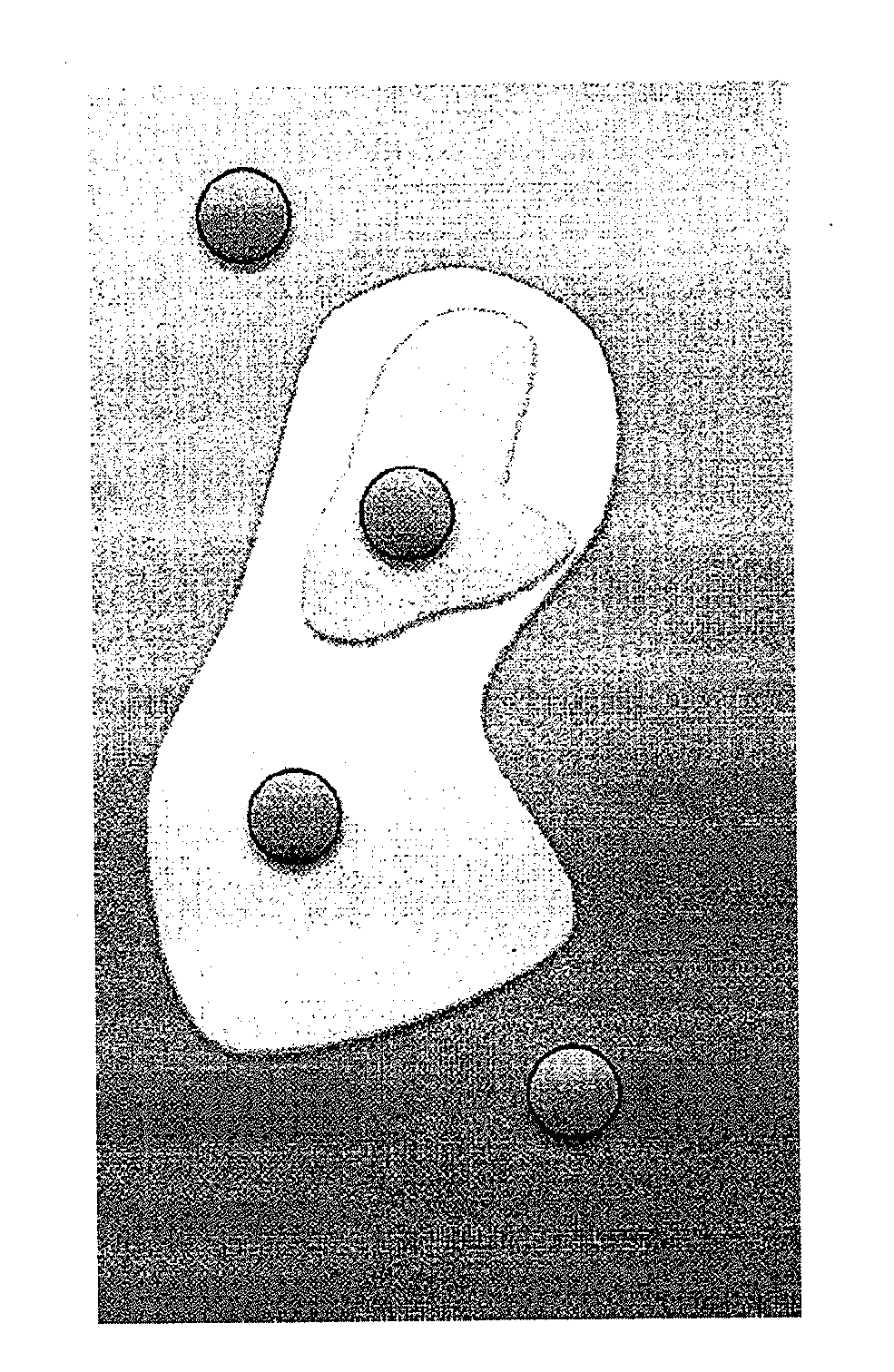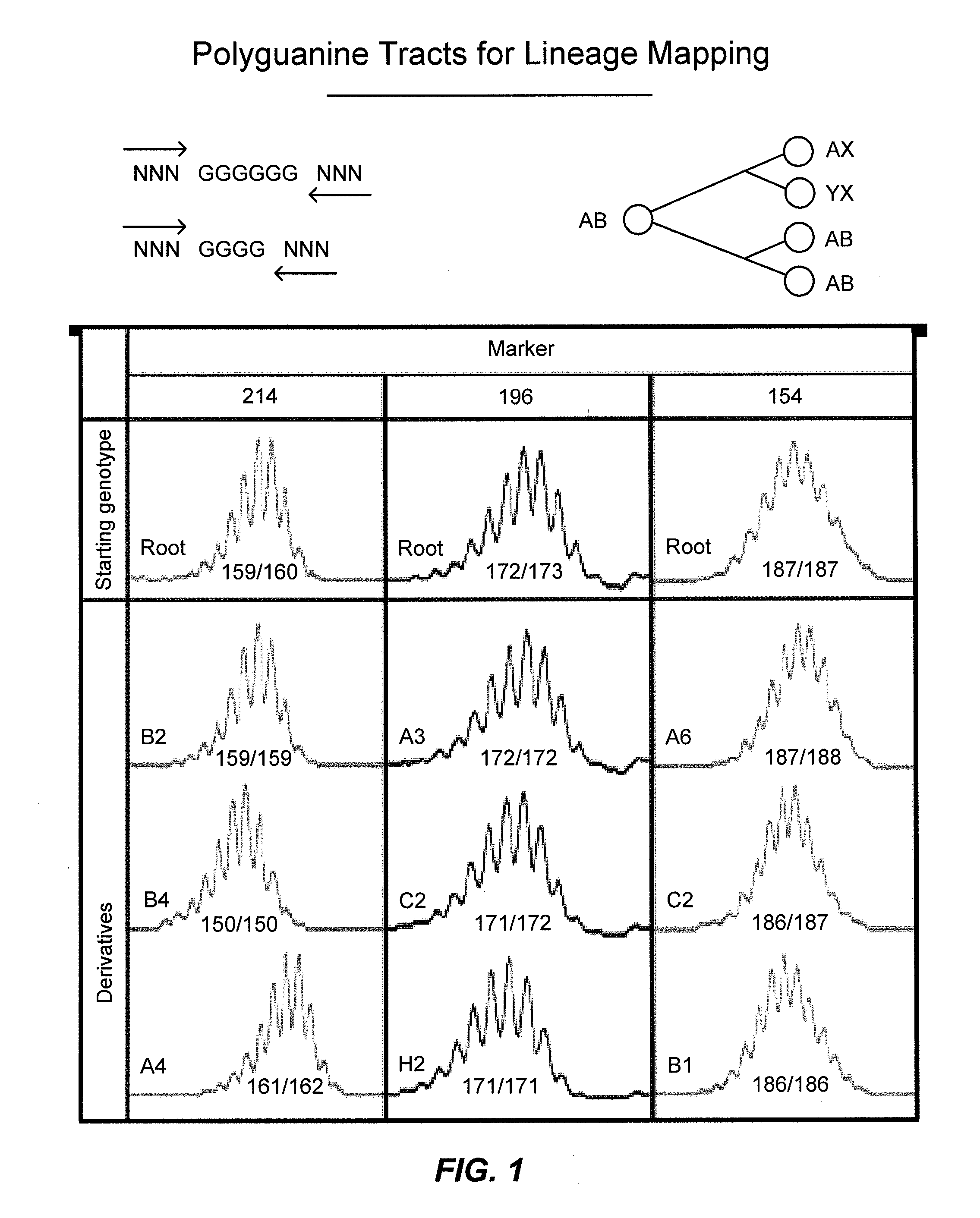Method for detection of pre-neoplastic fields as a cancer biomarker in ulcerative colitis
- Summary
- Abstract
- Description
- Claims
- Application Information
AI Technical Summary
Benefits of technology
Problems solved by technology
Method used
Image
Examples
example 1
[0139]Repetitive DNA is particularly prone to oxidative injury and slippage upon repair. More than a decade ago, it was observed that patients with UC had an elevated rate of microsatellite instability, even in non-dysplastic mucosa; however, using what later came to be known as the Bethesda panel, this microsatellite instability was lower than that seen in mismatch repair deficient, microsatellite instable cancers. With the tools available at the time, the sensitivity of this finding was low, and the observation retreated into obscurity. In more recent years, in vitro studies of oxidative injury to DNA suggested that polyguanine (poly-G) tracts are at least 2-3 times more sensitive to peroxide than other types of repeats tested. At the same time, new methods have emerged that allow for significantly more efficient analysis. In the present studies, the biomarker utility of detecting clonal expansion events marked by slippage events in polyguanine microsatellite tracts was assessed f...
example 2
[0144]Studies were undertaken to determine whether there is variability in the performance of a biomarker based on 1) the physical distance of the biopsy tested from the neoplasia 2) the presence of inflammation in the biopsy, 3) the variability that may occur in between non-dysplastic biopsies within an individual case and 4) the number of sample biopsies per case that are optimum for an accurate biomarker reading.
[0145]To evaluate these variables biomarker studies were performed on multiple biopsies obtained throughout the individual colons of UC cases, herein referred to as “mapping studies”. An average of 7 biopsies were taken from along the full length of the individual colons of 10 UC Progressors, including samples of low-grade dysplasia (LGD), HGD, and at least 5 biopsies of non-dysplastic mucosa. Five biopsies were analyzed for each of 5 UC Non-progressors. The biopsies were separated into epithelial and stromal fractions by EDTA shake-off and run as independent samples. Eve...
example 3
Polyguanine Tract Genotyping
[0151]Microsatellite genotyping by capillary electrophoresis produces an analog signal that reflects the predominant allele lengths within a DNA sample. We have previously identified somatic mutations in polyguanine alleles that are unique to single mouse cells by clonally expanding their genome in vitro prior to analysis (Salipante SJ & Horwitz M S, Proc Natl Acad Sci USA (2006) 103(14):5448-5453; Salipante SJ, E M, & Horwitz M S (Phylogenetic Analysis of Developmental and Postnatal Mouse Lineages. (Submitted to Evolution and Development) each of which is hereby incorporated by reference in their entirety for all purposes). Such mutations cannot be detected in bulk-tissue because rare alleles are obscured by more prevalent ones. Initial experiments in the present study sought to establish the feasibility of detecting novel polyguanine genotypes in the human colon where clonal expansion has occurred in vivo.
[0152]Fluorescently labeled PCR primers were des...
PUM
| Property | Measurement | Unit |
|---|---|---|
| Fraction | aaaaa | aaaaa |
| Fraction | aaaaa | aaaaa |
| Fraction | aaaaa | aaaaa |
Abstract
Description
Claims
Application Information
 Login to View More
Login to View More - R&D Engineer
- R&D Manager
- IP Professional
- Industry Leading Data Capabilities
- Powerful AI technology
- Patent DNA Extraction
Browse by: Latest US Patents, China's latest patents, Technical Efficacy Thesaurus, Application Domain, Technology Topic, Popular Technical Reports.
© 2024 PatSnap. All rights reserved.Legal|Privacy policy|Modern Slavery Act Transparency Statement|Sitemap|About US| Contact US: help@patsnap.com










